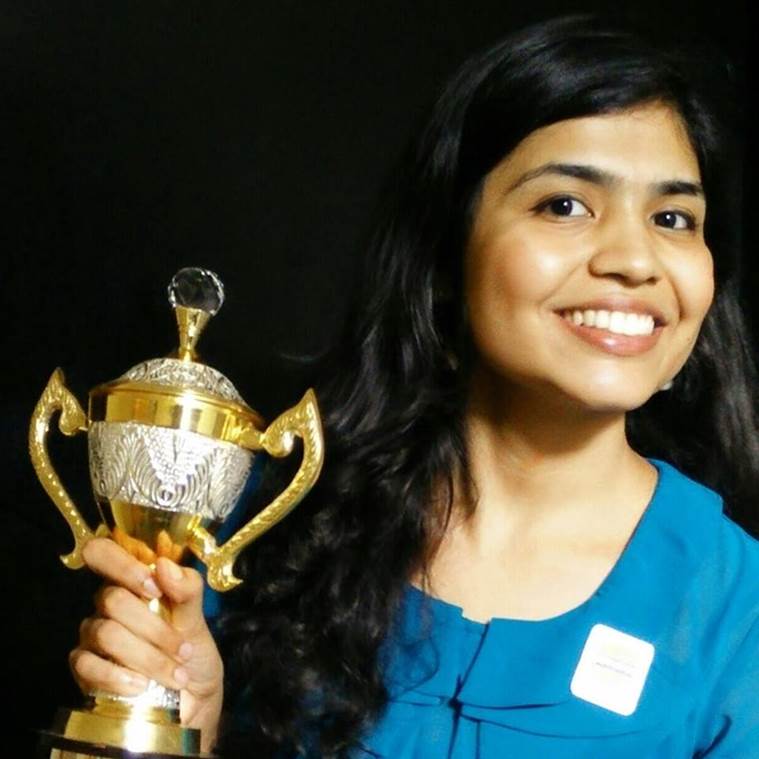The checkmate over hijab
Chess champion’s boycott of tournament over headscarf rule is an indictment of Iran’s ruling clergy.

Chess star Soumya Swaminathan.
India’s woman’s chess grandmaster and former world junior girls’ champion Soumya Swaminathan’s refusal to accept the Khomeini-era Iranian diktat that imposes a blank headscarf ban on visiting women has, once again, highlighted the antediluvian methods of the Islamic republic and its outmoded thinking. Swaminathan’s withdrawal from the Asian Team Chess Championship to be held in Iran from July 26 to August 4 because of the compulsory headscarf rule is a reminder that there is little deference for diversity, informed choice and personal preference within the clerical state that remains ossified in the monochromatic interpretation of the otherworldly ideologies that the country has chosen to impose on itself after the 1979 anti-monarchy revolution.
The Iranian Revolution was a culmination of diverse political ideologies and principles with the Left-leaning intellectuals and workers making great sacrifices and playing a lead role in fighting the tyranny of the Shah. Sadly, it was hijacked by the Islamist extremists and appropriated by Rohullah Khomeini, who adopted the title of the leader of the revolution. Under his command, the country was forced to adopt a rigid religious doctrine much against the rich traditions of the past that flourished an unrivalled Iranian civilisation that has stood the ravages of the time. Besides, Khomeini modelled the country on a strict sectarian outlook that heavily discriminated against other Muslim sects such as Sunnis and minorities like Bahai’s, Christians and Jews.
As the new Iranian regime restricted the Sunni Islam and erected institutional mechanisms of discrimination against it, the centuries-old Shia-Sunni conflict was renewed and rekindled with the zealous passion. The hate-filled rivalry is now openly being played out between the al Qaeda and ISIS terror groups on the one side and Hizbullah and other Iranian terror proxies on the other, causing massive destruction of men and material. The enmity continues to blight West Asia and is slowly seeping through the rest of the Muslim world provoking an industrial-scale incubation of extremist ideologies.
The hijab or chador, as it is called in Iran, has remained part of many cultures east and west and continues to be a dress of choice for millions of women around the world. However, forcing it universally under the guise of religion is deeply detested by the women in Iran or elsewhere. In the past, I have interacted with dozens of Iranian ladies — young and old — on the streets of Tehran or elsewhere in the country who loathed the imposition and would always find inventive ways and means to compromise it and its intended spirit. That is why in 2007 and onwards, the morality police of the country, under the supervision of Supreme Leader Ali Khamenei, the successor of Khomeini, initiated several fierce crackdowns on women on account of controlling “bad hijab” — exposure of body parts other than hands and face. As a result, thousands of women were pulled up on the Tehran streets and cautioned over their “poor Islamic dresses”. Hundreds were arrested and given custodial sentences as well as severe punishments including being subjected to violence in the form of lashes.
The obsession of the clerical regime to control women is not limited to their Iranian counterparts. It has been a mandatory requirement for every woman who visits Iran including those participating in sports events. This unhealthy obsession with regulating women’s life and behaviour is extremely unreasonable and highly uncalled for. Such coercion is akin to the ongoing Islamophobic legislations in several western countries that have sought to ban hijab in public places, forcing Muslim women to abandon it as some symbol of a faux empowerment. Both the ban and the imposition of the veil are equally offensive and worthy of nothing but contempt and condemnation.
Swaminathan rightly says that the oppression of compulsory headscarf is “in direct violation of my basic human rights including my freedom of expression, and right to freedom of thought, conscience, and religion”. As a result, her only choice and way to protect her rights are to abandon her participation in a sports event that should not have had to do anything with religion or its imposed mores. While it is extremely sad that the chess grandmaster cannot pursue her passion, it is also a terrible indictment of the ruling clergy. It is because of their ossified and unyielding set of rules that the potential of a great sporting event has been obliterated and a promise of cross-cultural participation and understanding extinguished.
Hijab might have been adopted as the emblem of the Shia Islamist Iran’s socio-religious, political and cultural identity with hordes of women shown covered in black chadors as a marker of its piety and Islamic observance, but actively forcing women, and that too foreigners, to adopt the imposition is nothing but moral and religious depravity. The Iranian regime will do well to accept the fact that the world is about diverse choices, lifestyles, and alternatives.
The writer is a British Kashmiri journalist and security expert
For all the latest Opinion News, download Indian Express App







































No hay comentarios:
Publicar un comentario